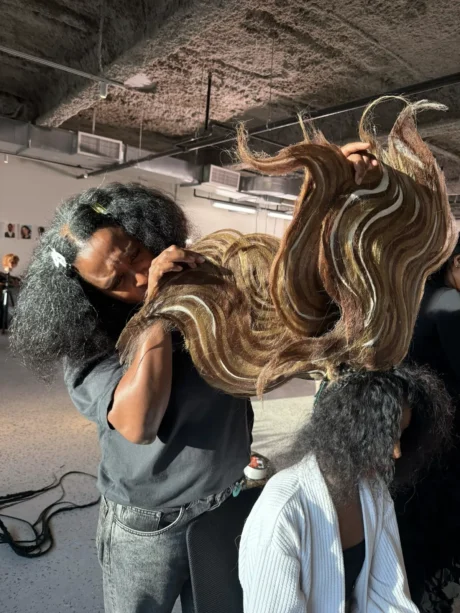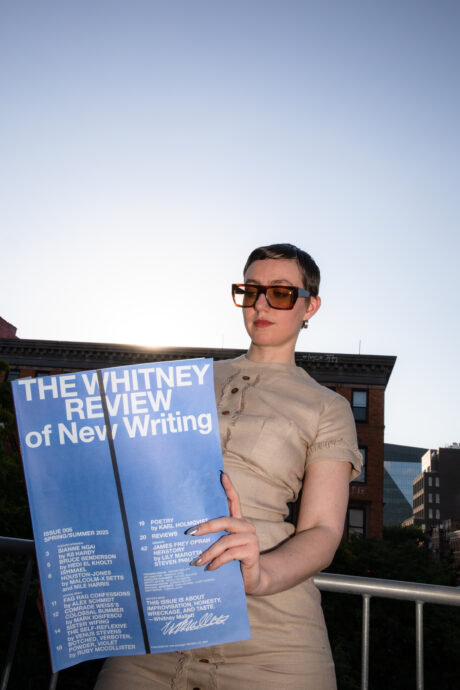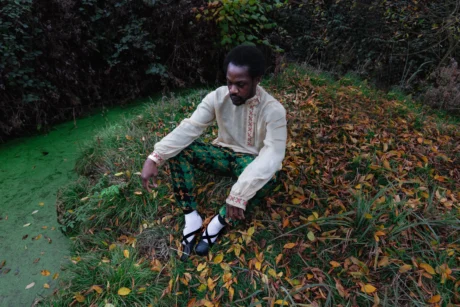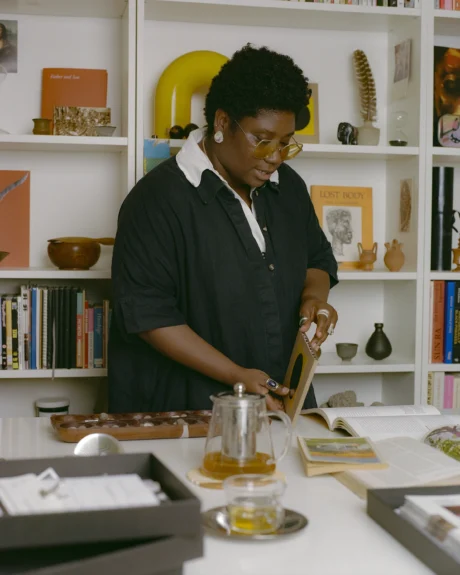Elephant contributor Phin Jennings takes readers through a day in Paris with Vincenzo de Bellis (Art Basel Director of Fairsand Exhibition Platforms) during Art Basel Paris.
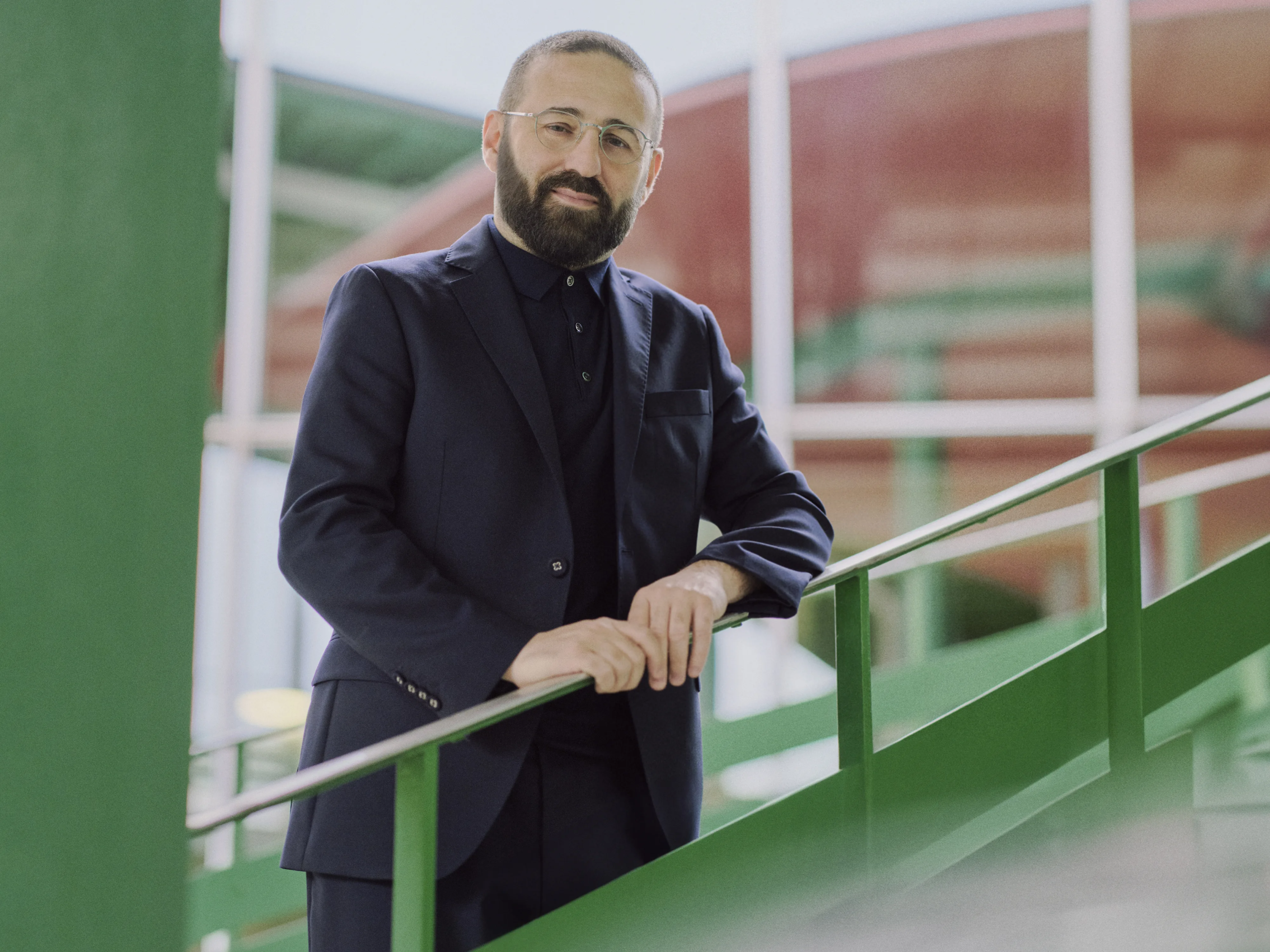
Though Vincenzo de Bellis has never lived in Paris — born in Italy, he currently splits his time between Basel and Milan — he has always had a soft spot for it. “It’s one of the most incredible, elegant cities in the world. Art, design, fashion: all the things that Paris has are things that I’m interested in,” he tells me. He learned to enjoy pastis, the — to this writer, quite disgusting — anise-flavoured French apéritif, visiting university friends here in his early 20s. Since joining Art Basel as Director of Fairs and Exhibition Platforms, his work brings him here regularly. “I feel more and more like a Parisian in many ways,” he says.
Being a tourist in a city like Paris is tricky, the perfect itinerary being a deft balance between the obvious and the esoteric. In my travel writing, I have found that asking locals what to do in their city often brings proudly obscure answers. Make no mistake, I’m always grateful for recommendations like the Motorcycle Museum at the northern edge of Marseille or the gothic nightclub in a suburb of Athens. In Paris, though, I feel that I need to tread a line — the standard tourist trail is boring, but some of its spots are popular for a reason.
With Art Basel Paris coming up this weekend, we’re lucky to have de Bellis — situated somewhere between a bonafide insider and open-eyed outsider — to provide us with the perfect whistle-stop Parisian itinerary. Allez!

10.00 AM: Morning in Le Marais
“Call me bourgeois but, really, le Marais is still my place, my neighbourhood, the place where I like spending my days,” de Bellis says. Once the home of Paris’ aristocratic class, the Marais is replete with grand historical buildings and squares, Place de Vosges being his favourite. The quarter was all but abandoned during the French Revolution. Shortly after, it was reclaimed by bohemians and narrowly escaped being flattened by officials seeking to modernise the city. Today, it is to Paris what Soho is to London. The good, the bad and the ugly; a network of streets where bubble tea shops, designer boutiques, tourist-spewing boulangeries and chic bars somehow coexist in relative harmony.
And art — which is what de Bellis comes here for. Specifically, the Musée National Picasso-Paris and commercial galleries Galleria Continua (“I cannot avoid saying this, because they are fellow Italians”), Thaddeus Ropac, Karsten Greve and Mor Charpentier. The latter opened recently in the former home of now-defunct project space GB Agency, the loss of which he mourns. Though not immune to the current epidemic of gallery closures, this list shows the wide gamut of art to see in the Marais. Within a five-minute, three-block walk there’s emerging conceptualism, blue-chip contemporary art and 40 rooms of Picasso in the middle. Aside from anything else, it’s enough to work up quite an appetite.

13.00 PM: Lunch in Saint Germain
For lunch, de Bellis likes to take a stroll across the Seine to Saint-Germain-des-Prés, a picturesque neighbourhood known for its many cafés. He’s not too proud to recommend Café de Flore, the fabled spot where Giacommetti, Beckett, de Beauviour and Sartre would engage in literary debate over the house special of boiled eggs with bread and butter. It now tends to have a queue snaking around it — I don’t ask de Bellis whether his Paris credentials are enough for him to cut the line.
Around the corner is the present-day home of a different kind of discourse. De Bellis describes La Palette as “the office” of the many small galleries that surround it. Sit at the right table and you might find that your meal comes with a side of succulent inter-dealer gossip.

14.00 PM: Museum vs. Museum
Assuming you don’t get stuck talking shop at La Palette, de Bellis offers two options for an after-lunch museum visit. He regularly visits all of Paris’ major museums — “the usual suspects” — in a professional capacity, but there’s one that he has a particular soft spot for. “My affection for Musee D’Orsay is huge,” he tells me, “it’s a beautiful part of Paris, a place where I always go when I’m in town.” Housed in a former railway station on the riverbank, the D’Orsay is an impressive space with a collection to match. At any given time it has around 3,000 works on show, including heavy hitters like Manet’s The Luncheon on the Grass (1862–63) and Renoir’s Bal du moulin de la Galette (1876).
If that sounds too touristic for you, the Musée Marmottan Monet is a more obscure alternative: “It’s not the usual place where people will hang out, it’s more for artsy people,” de Bellis says. On the western edge of the city, it houses a formidable collection of paintings from across the artist’s career. Its website’s landing page issues a stark warning to would-be visitors that Impression, Soleil levant (1872) is on loan until next year but that’s OK, we’re not here for blockbusters.

16:00 PM: Art Basel Paris
Following a day of gallery-hopping with a visit to an art fair might sound like a recipe for exhaustion. To de Bellis, it’s another day in the office. An attentive step-counter, he tells me that 20,000 per day is his norm in Paris.
This is the fair’s first edition at the Grand Palais, which he explains “was always meant to be our home” and will host close to 200 galleries. My advice, as ever with fairs, is to do some research in advance and make a beeline for the ones that look the most interesting. There’s a programme of talks with speakers including James Massiah, Ida Ekblad and Jamian Juliano-Villani taking place next door in the Petit-Palais — the perfect place to take a load off.
De Bellis’ reluctant final recommendation is Café 1902, situated in the picturesque garden of the Petit-Palais: “people should stay in the fair, but if you really want to, it is an easy trip and you get to a wonderful place.” Stay in the fair if you want, I’ll be outside enjoying a restorative drink. It’s been a long day in Vincenzo de Bellis’ Paris, living a life somewhere between local and tourist.

Words by Phin Jennings

